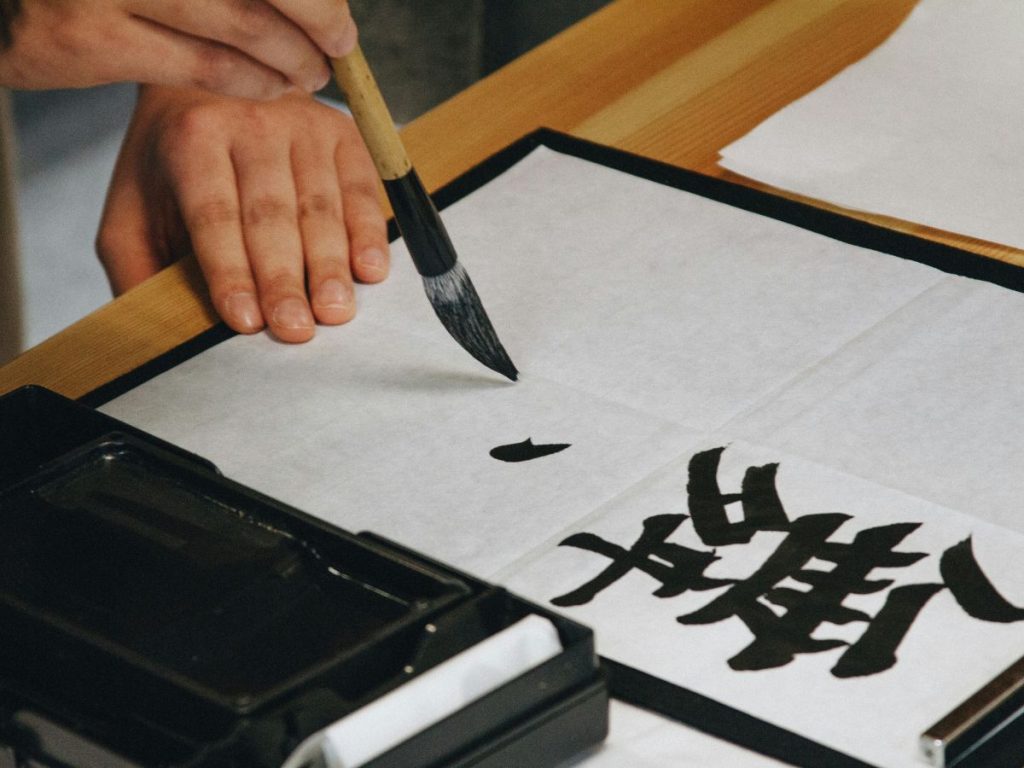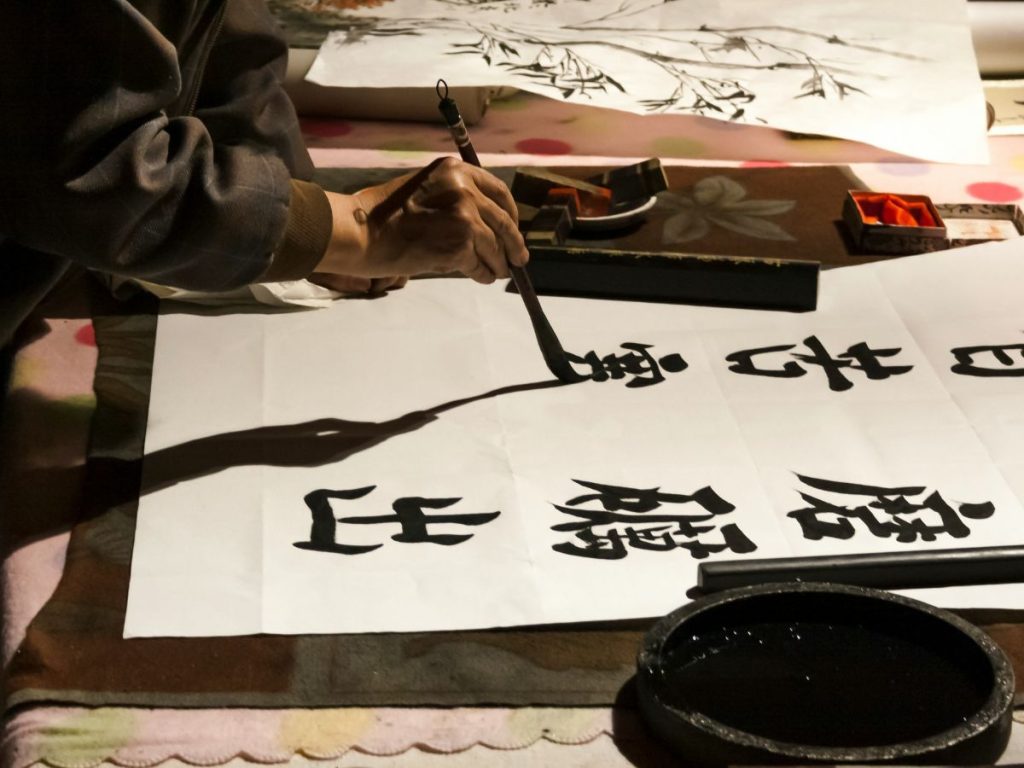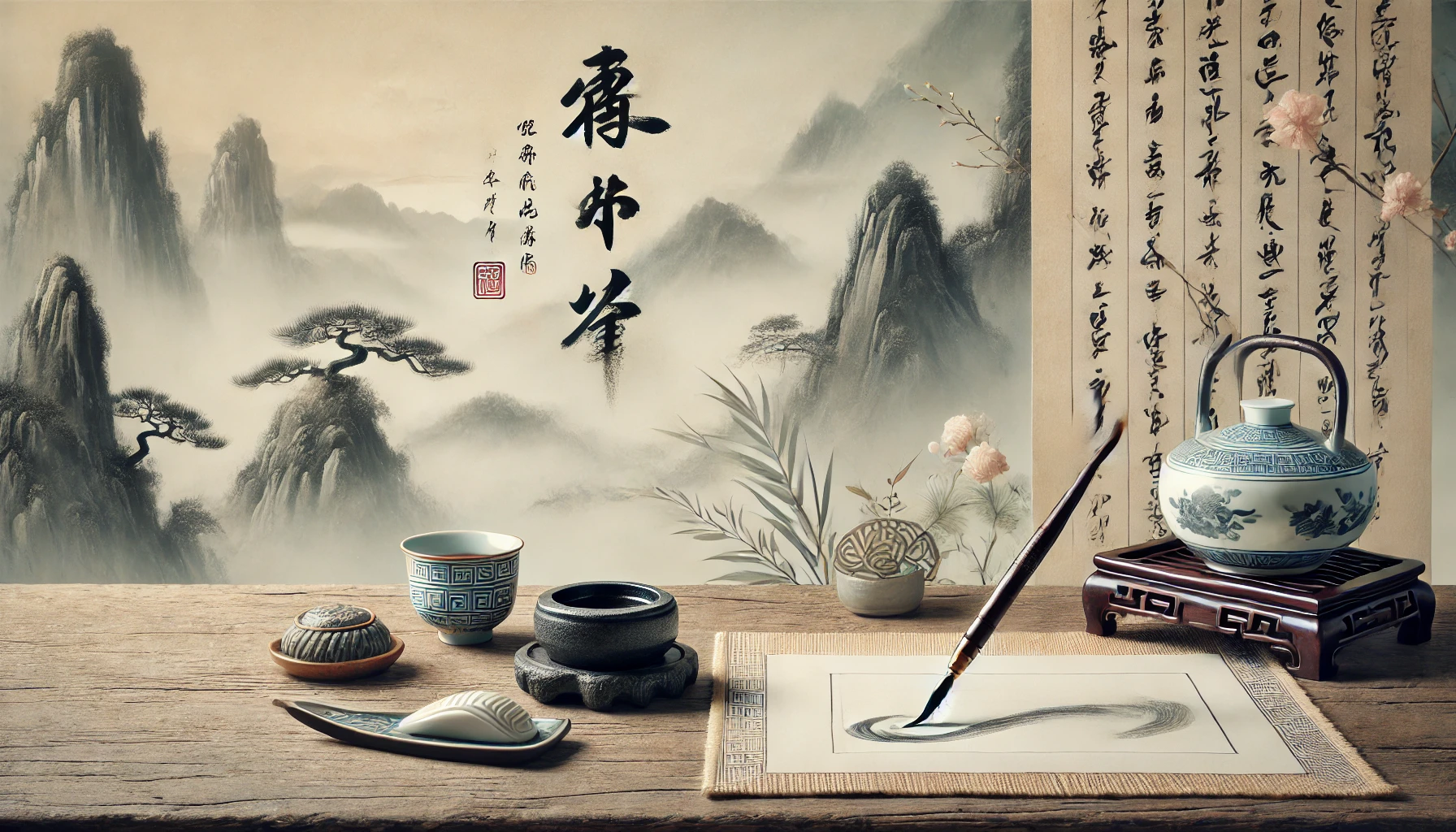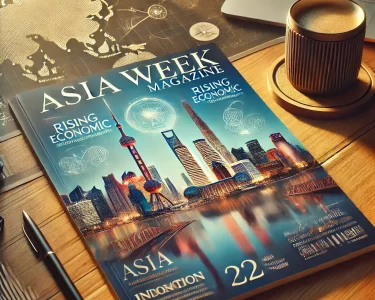Chinese calligraphy, an ancient and revered art form, has been practiced for thousands of years. It is more than just beautiful writing—it is a form of artistic expression, cultural heritage, and spiritual practice. With its deep historical roots and profound aesthetic appeal, Chinese calligraphy remains a significant part of Chinese culture and an inspiration to artists worldwide.
The History of Chinese Calligraphy
The origins of Chinese calligraphy date back over 3,000 years to the Shang Dynasty (c. 1600–1046 BCE), when early forms of Chinese characters were inscribed on oracle bones and bronze vessels. Over time, the art form evolved, giving rise to various script styles and calligraphic traditions. Key historical periods that shaped Chinese calligraphy include:
- Shang and Zhou Dynasties – The earliest evidence of Chinese writing appears in oracle bone script and bronze inscriptions.
- Qin Dynasty (221–206 BCE) – The first emperor of China, Qin Shi Huang, standardized the script, giving rise to Small Seal Script (Xiaozhuan).
- Han Dynasty (206 BCE–220 CE) – Clerical Script (Lishu) emerged, making writing more efficient and structured.
- Tang Dynasty (618–907 CE) – Considered the golden age of Chinese calligraphy, this period produced many great calligraphers, such as Yan Zhenqing and Ouyang Xun.
- Modern Era – Chinese calligraphy continues to evolve, blending traditional techniques with contemporary artistic expression.
The Five Major Script Styles

Chinese calligraphy is composed of several distinct script styles, each with its own characteristics and historical significance:
1. Seal Script (Zhuanshu)
One of the earliest script styles, Seal Script is characterized by rounded, symmetrical characters with uniform strokes. It is still used today for decorative inscriptions and official seals.
2. Clerical Script (Lishu)
Developed during the Han Dynasty, Clerical Script features flatter, more angular strokes, making it easier to write compared to Seal Script. This style laid the foundation for modern Chinese writing.
3. Regular Script (Kaishu)
Regular Script is the most commonly used calligraphic style today. Known for its balanced and structured form, it is widely used in books, signage, and formal documents.
4. Running Script (Xingshu)
A semi-cursive script, Running Script allows for more fluid and expressive strokes. It is commonly used in everyday handwriting and artistic calligraphy.
5. Cursive Script (Caoshu)
Cursive Script is the most dynamic and expressive of all styles. The characters flow together in a highly artistic manner, making it difficult to read for those unfamiliar with calligraphy.
Tools and Materials of Chinese Calligraphy
Chinese calligraphy relies on the Four Treasures of the Study (Wenfang Sibao):
- Brush (Mao Bi) – Made from animal hair, the brush is the most essential tool in calligraphy, allowing for variations in stroke thickness and fluidity.
- Ink Stick (Mo) – Traditionally made from soot and animal glue, the ink stick is ground with water on an ink stone to produce liquid ink.
- Ink Stone (Yan) – A flat stone surface used to grind ink, allowing the calligrapher to control ink consistency.
- Paper (Xuan Zhi) – Also known as “rice paper,” Xuan paper is absorbent and ideal for calligraphy, allowing for smooth, controlled strokes.
The Philosophy Behind Chinese Calligraphy
Chinese calligraphy is deeply intertwined with philosophy, particularly Confucianism, Daoism, and Buddhism. The art form emphasizes discipline, harmony, and mindfulness. Calligraphers must cultivate patience and inner peace to achieve fluid, expressive strokes. Many practitioners see calligraphy as a meditative practice, where each brushstroke reflects the artist’s emotions and state of mind.
Famous Chinese Calligraphers
Throughout history, numerous calligraphers have left an indelible mark on Chinese culture. Some of the most renowned figures include:
- Wang Xizhi (303–361 CE) – Often referred to as the “Sage of Calligraphy,” Wang Xizhi is best known for his work Lantingji Xu (Preface to the Poems Collected from the Orchid Pavilion).
- Yan Zhenqing (709–785 CE) – A master of Regular and Running Script, Yan’s work is admired for its strength and elegance.
- Su Shi (1037–1101 CE) – A poet, painter, and calligrapher, Su Shi’s calligraphy is expressive and deeply personal.
The Influence of Chinese Calligraphy in Modern Art

Chinese calligraphy continues to inspire contemporary artists worldwide. It has influenced modern graphic design, abstract art, and digital typography. Many artists fuse traditional calligraphy with modern elements, creating innovative works that bridge the past and present.
How to Start Practicing Chinese Calligraphy
If you are interested in learning Chinese calligraphy, here are a few tips to get started:
- Learn the Basics – Study different script styles and familiarize yourself with stroke order and structure.
- Get the Right Tools – Invest in quality brushes, ink, paper, and an ink stone.
- Practice Stroke Techniques – Begin with fundamental strokes before progressing to full characters.
- Embrace Patience and Mindfulness – Calligraphy is as much about the journey as the final product. Approach each session with focus and calmness.
- Study the Masters – Analyze the works of famous calligraphers to understand their techniques and artistic expressions.
Conclusion
Chinese calligraphy is more than just an ancient writing system—it is a timeless art form that embodies beauty, culture, and philosophy. Whether as a meditative practice, an artistic pursuit, or a link to history, calligraphy offers a meaningful and enriching experience. By appreciating and practicing this art, we connect with a profound tradition that continues to inspire generations across the world.





